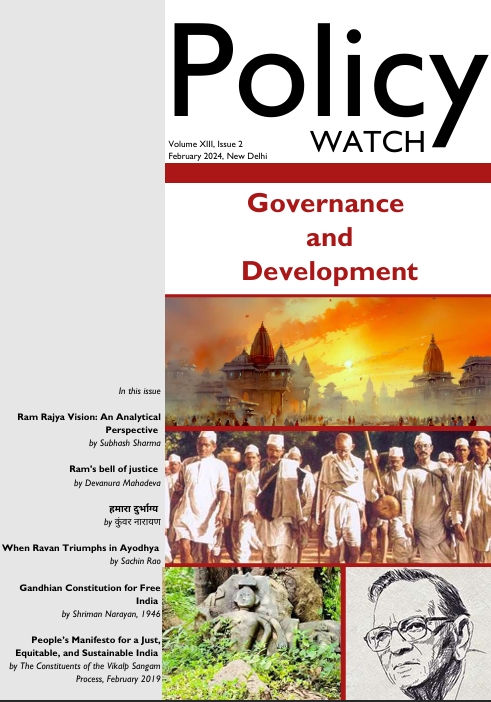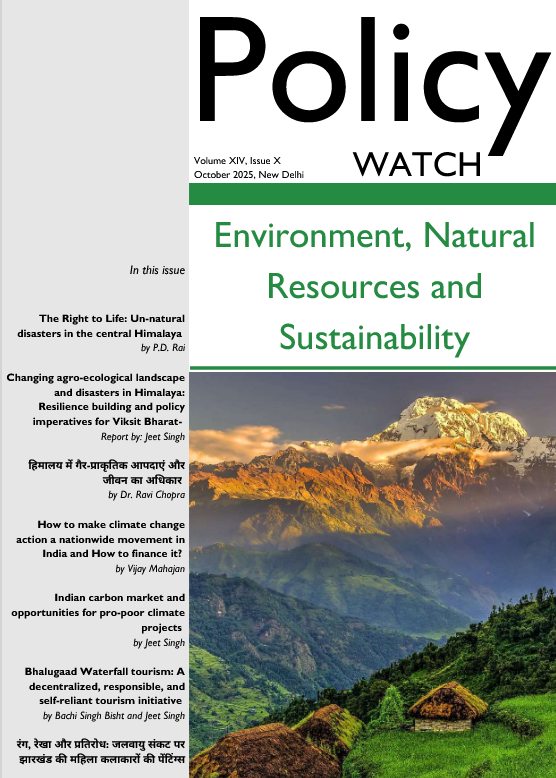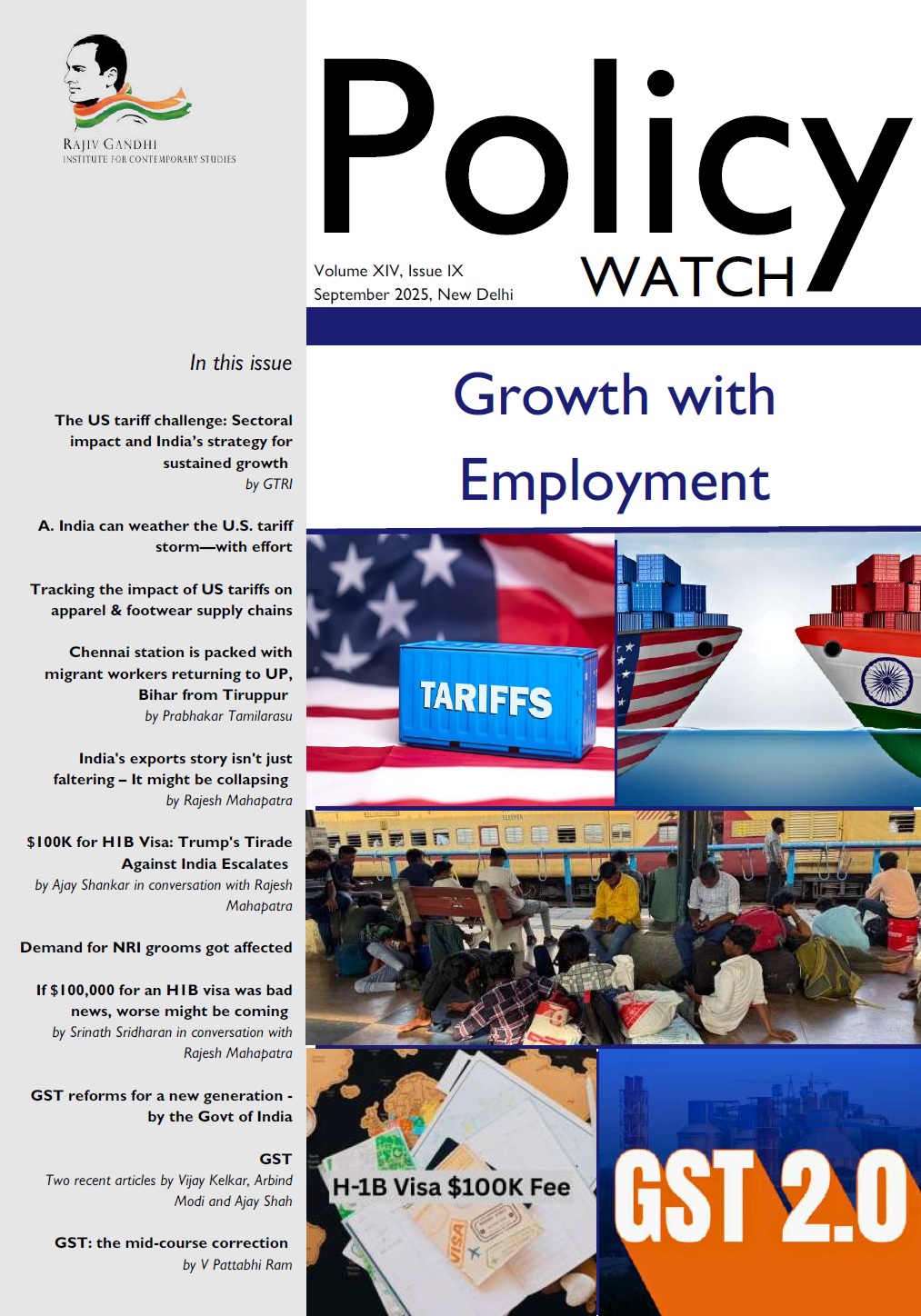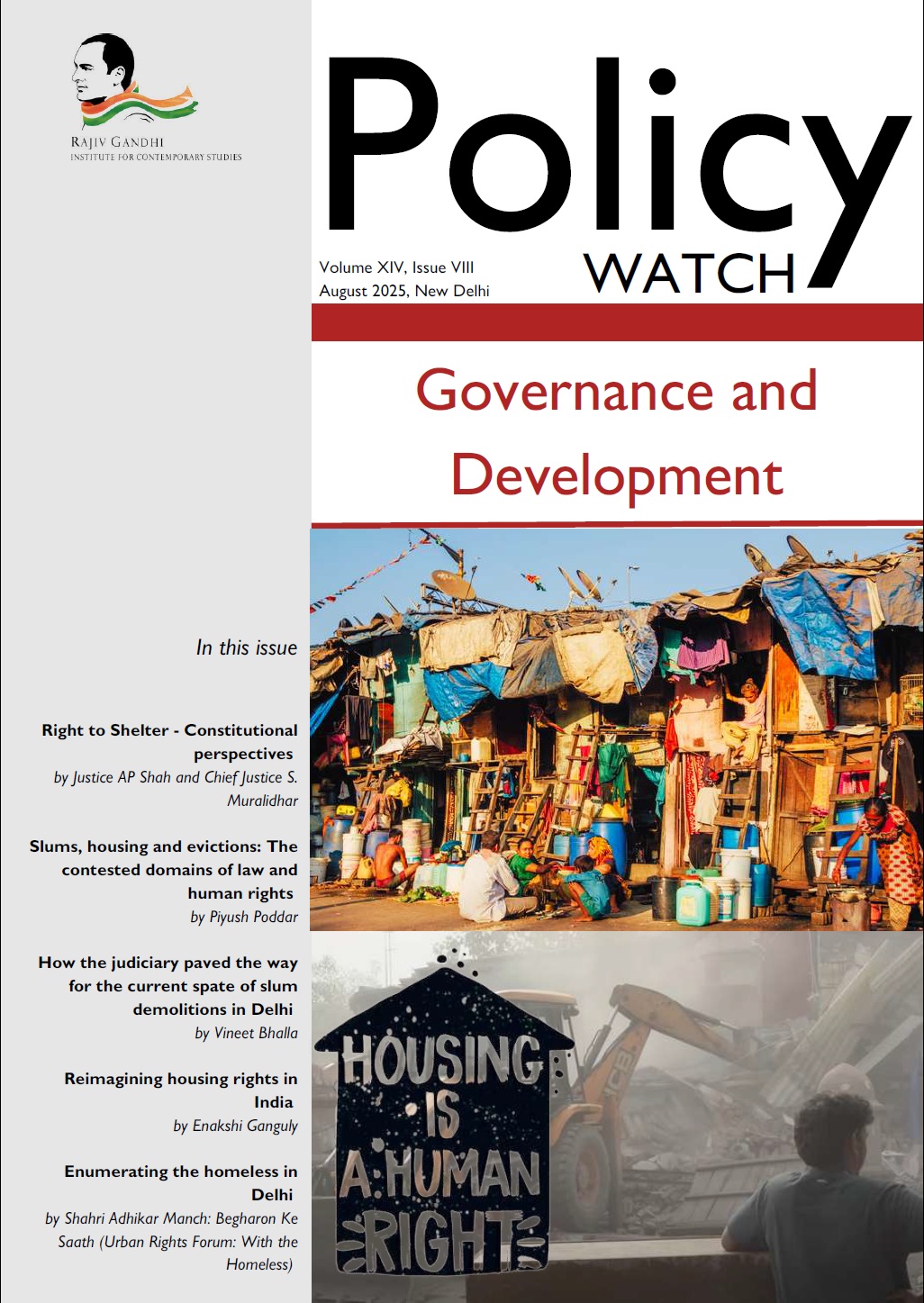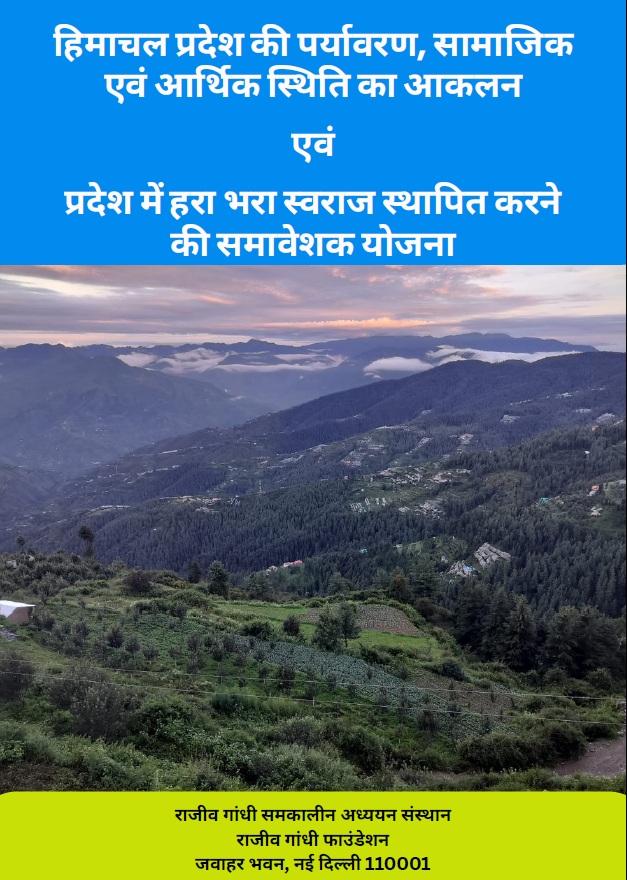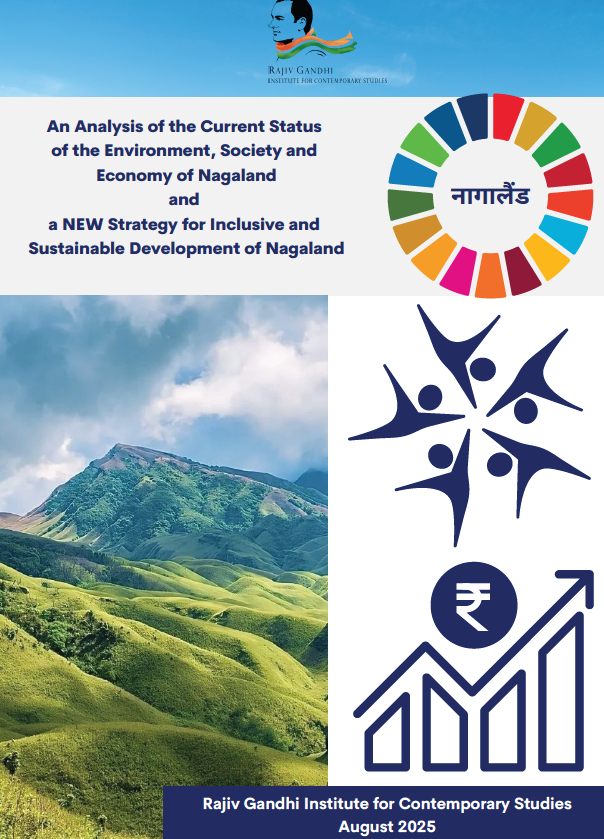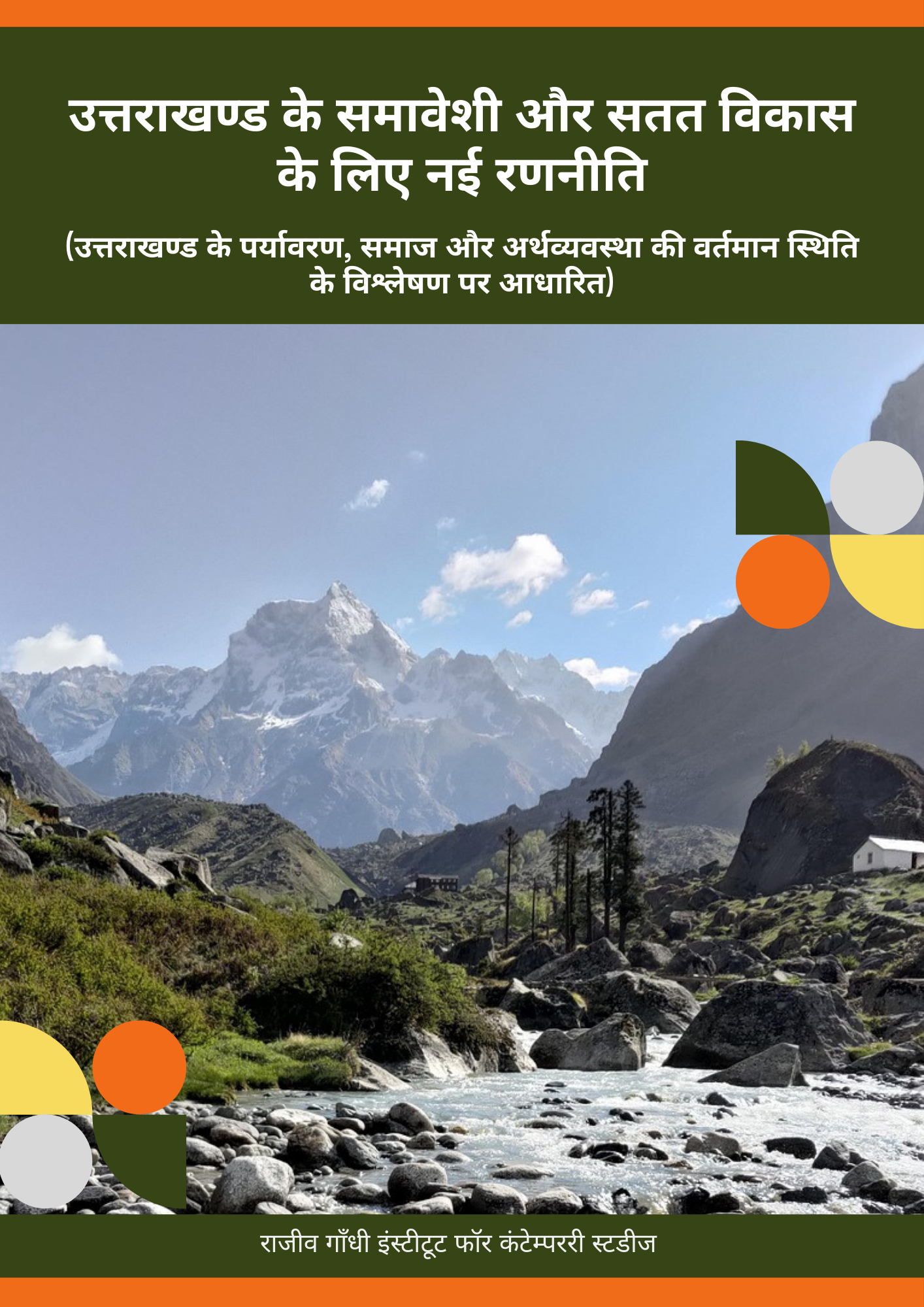The February 2024 issue of Policy Watch is on the theme – Governance Development. Coming so soon after 22nd January, 2024, when the Pran Pratishta (consecration) of the newly constructed Ram Mandir in Ayodhya, we could not but take notice of this contemporary issue. Thus we begin with an article by Dr Subhash Sharma – Ram Rajya Vision: An Analytical Perspective.
Using slokas from the Valmiki Ramayana m and dohas from the Tulsidas Ram Charit Manas, the article explains the vision of Ram Rajya in poignant detail. According to Valmiki, in Ram Rajya, all the people were endowed with excellent characteristics. All were engaged in virtue. Tulsi Das says: in Ram Rajya, no one suffers at physically, spiritually and bodily. Everyone lives in harmony with affection towards each other while performing their own duties as described in the scriptures. For our times, we can take it as per the law and ethically. All the four limbs of the Dharma – Truth, Purity, Compassion & Charity are being fulfilled, and no one does a Paap or sin even in their dreams, hence earn the right to Moksha or liberation from the cycle of birth and death. We then carry an article Ram’s bell of justice by Devanura Mahadeva in which he explains what we can learn from tribal communities that have a consciousness which evaluates gods — worship them and question their divinity. Devanura Mahadeva is an intellectual and activist from Tamil Nadu.
This is followed by a small poem by the well-known Hindi Poet Kunwar Narayan, winner of the Jnanpith Award for 2005. In simple four lines, he lays bare the political agenda for which the Ayodhya event was used. After this we have republished an article When Ravan Triumphs in Ayodhya by Sachin Rao, a Congress worker. He explains, January 22, 2024 was a sad day because along with the idol of the Maryada Purushottam in Ayodhya was also enshrined a new idea of India, where the majority can use any means to impose their desire upon the rest of us. The temple may have been dedicated to Ram, but it is Ravan who seems to have triumphed in Ayodhya.
Next we carry the Gandhian Constitution for Free India, drafted by Shriman Narayan Agarwal in 1946. In a sense, this was the most significant attempt to build in the concept of Ram Rajya, as envisaged by Gandhiji into the constitutional framework of free India. The Gandhian Constitution was a 60-page document divided into 22 chapters that included ‘Basic Principles’, ‘Fundamental Rights and Duties’, ‘Provincial Government’, ‘Central Government’, and the ‘Judiciary’. It was mostly descriptive and explanatory, though some parts are written in a legalistic style in the form of draft clauses. The document contained a number of noteworthy features. It strongly advocated for a decentralised political and administrative setup with village panchayats as the core units.
These units aggregate to form upper levels of government. Village panchayats were given extensive powers that included judicial functions as well. Fundamental duties were conjoined with fundamental rights; the document explicitly states that rights are contingent on the performance of duties. Ironically, the Gandhian Constitution contained a provision for a ‘right to bear arms’. Of course, in his foreword, Gandhiji wrote: “If I were to commit myself to every word appearing in these pages, I might as well write the thing myself.” But he goes on to say later: “There is nothing in it which has jarred on me as inconsistent with what I would like to stand for.” As we know, this vision was never adopted, either in spirit or in operational detail, in the Constitution of India that was finally adopted on 26th Nov 1949. We leave it to the readers to judge what would been the difference in the governance and development trajectory of India had the Gandhian constitution draft been accepted wholly or in part.
Finally, we turn to the future. The search of Ram Rajya has not ended and there are many groups which are systematically working to envisage a desirable future for India. One such effort was that of Vikalp Sangam, a group of about 50 organisations. We carry their main document, produced in Feb 2019, just a month before the COVID pandemic. It is titled – People’s Manifesto for a Just, Equitable, and Sustainable India.
Policy Watch: Governance and Development – February 2024
Send download link to:

